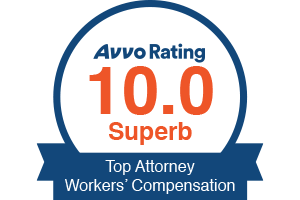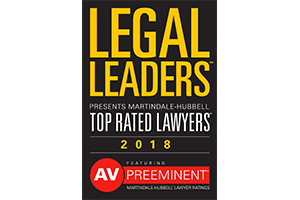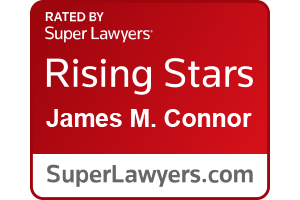Get Back on Their Feet
The 5-Step Process Used to Determine Social Security Disability in New York City
In this article we explain how the 5-step process is used in determining if you qualify for Social Security Disability Benefits. If you live in the New York City area, and you are thinking of applying for Social Security Disability, or you have applied and you’re initial application was denied, you should consult with an experienced New York City Social Security Disability Lawyer to see how we can help you in securing your benefits.
The 5-step process is what the Social Security Administration and judges use in determining whether or not you qualify for benefits under Title II, which is Social Security Disability Insurance benefits. In his article we will discuss those 5 steps, and some issues you may face in acquiring your benefits.
Insured Status
Before the first step, the Social Security Administration will determine whether or not the Claimant is insured and can actually receive the benefits. This is based on the Claimant’s work history and how many quarters (four each year) the Claimant paid into Social Security while they were working. If you, the Claimant, are insured, then you can apply for Social Security Disability Benefits and they will move to Step 1. If you are not insured as of the date you are claiming to be disabled, you cannot get Social Security Disability Benefits, however you can get Social Security Supplemental Income, which is a needs-based program.
Step 1: Substantial Gainful Activity
This is simply a legal term to decide if you are working. While Claimants applying for an on Social Security Disability are able to work part-time and make a certain amount of money while still qualifying for benefits, if you are working above the Substantial Gainful Activity level, you will be disqualified. That level changes every year, but in 2020 it is currently $1260 per month.
If the Claimant is making above this level, and cannot prove that they will be unable to work at or above this level for at least a year in the future, they will not qualify for disability even if they meet the other requirements. If the person has not engaged in work that rises to this level for at least a year, or can prove they will not for at least a year, then they move on to step 2.
Step 2: “Severe” Impairments
A “severe” medically determinable impairment, or combination of impairments, is something that has a significant impact on the Claimant’s ability to perform the basic activities they need to in order to work. These need to be “medically determinable” which means that a doctor has to be able to diagnose the impairment. The “severe” part is rather ambiguous, as the impairment must simply be more than a minor limitation on the Claimant’s ability to perform those work functions. A non-severe impairment would be say obesity, which is medically determinable, but if it is not at a level that it limits the Claimant’s ability to work, it will not qualify.
Step 3: The Listings
The Social Security Code has hundreds of Listings which are specific conditions, with specific requirements, in order to qualify for disability. This is only one of the two ways (the other is below) that a Claimant can be found disabled. Between a listing, and the second method below, listings are rarely met. This is because most of them have very specific requirements, that often include very specific tests. In a lot of cases the doctors simply have not performed the exact test needed, or they have not documented the evidence in the correct wording or with enough detail for the listing to be met.
For example, Anxiety is a listing in the Social Security code. The listing has two parts required for Anxiety (as well as an option for panic disorder, and obsessive-compulsive disorder). Part A requires that there be medical documentation of three or more of: restlessness, easy fatigue, difficulty with concentration, irritability, muscle tension, sleep disturbance. This is sometimes not correctly documented, or not documented in enough detail as the doctor or therapist may not write down all symptoms that are explained, or the Claimant may not have described all of their symptoms.
Under part B, there must be an extreme limitation in one, or a “marked” limitation of two of the following: ability to remember, understand, or apply information; ability to interact with others; ability to persist, concentrate, or maintain pace; ability to manage or adapt oneself. This is something that, again, is not often described in these terms, and is not often explored in detail with your doctor.
Step 4: Past Relevant Work
Far more of our clients win their Social Security Benefits at steps 4 and 5. In order to decide Step 4, the SSA or judge (with the help of a vocational expert) will classify what work the Claimant has done in the last 15 years, called the relevant period, in order to decide if the Claimant can do that work in the future. This requires that the Claimant did that job long enough to understand how it works, so a job that someone only did for a few weeks typically does not qualify.
In order to decide if the Claimant can do their past work, the SSA or judge will determine the Claimant’s “Residual Functional Capacity.” This means what kind of work can a person with the limitations of the Claimant do for full time work. It includes how much weight can the person lift or carry, what can they do with their arms and legs, how long can they focus on tasks, and much more.
Step 5: Other Work
If the Claimant is over the age of 55, the decision does not include other work. If a Claimant over age 55 cannot do any of their past work, and they made it past the initial steps in the process, they will be found disabled. For anyone under 55, they need to prove they cannot do any other work in the economy. This is often the hardest step for Claimants to pass because this includes jobs that are at the sedentary level. Sedentary work is work that does not require you to lift more than 10 pounds, and the job is done while seated with no more than occasional walking or standing.
Sedentary jobs would be something like sitting at a desk and watching video monitors for security reasons, or making phone calls and working on a computer. Many people who are unable to do more strenuous jobs can still do sedentary work so it is important to have a good Social Security Disability Lawyer on your side who can point out limitations that the judge may have overlooked. An inability to concentrate, or the inability to stay seated for 8 hours a day are some common ones, although there are a lot more.
Getting Your Benefits
If a Claimant makes it through all 5 steps of the process and met the requirements for each, they will be approved for Social Security Disability Benefits. This means they will start receiving their benefit checks monthly, and they may be entitled to backpay for the period in which they were unable to work due to their disability.
If you live in New York City and you are trying to get benefits, it is crucial that you have an experienced New York City Social Security Disability Attorney on your side to guide you through this process, and to prepare you for the case. You never have to pay anything out of pocket for representation, so if you are considering applying, or you have applied and were denied, call us, fill out our contact form, or use our live chat to get started today.










